Procurement
• 6 min read
SaaS Procurement vs SaaS Purchasing - What's the difference?
21st October, 2022
SHARE ON:
Both procurement and purchasing terms interchangebly used inside organizations, but there are some differences between them.
Key points
People often confuse the two terms, but these two are not similar. Both serve different purposes for companies.
Purchasing is more transactional, but procurement is a strategic procedure that takes multi-departmental inputs while closing any deal for the company.
Purchasing is a subset of procurement as in the procurement stage, sales are closed after a lengthy analysis, and products or services are purchased after contract negotiations.
Companies buy SaaS apps to streamline tasks and grow the business. There are two procedures that involve SaaS buying, i.e., procurement and purchasing. Procurement is a vast concept compared to purchasing, which is the subset of procurement. To learn more about procurement, we need to understand purchasing first.
This article will discuss the terms-procurement and purchasing- and their differences.
What is purchasing?
Purchasing is a simple process of buying software from any supplier. If interested, you can contact the supplier and ask for a fair price. Also, you can request quotations from multiple suppliers and choose the suitable one. Finally, you can close the deal as per your requirement.
The software purchasing process includes:
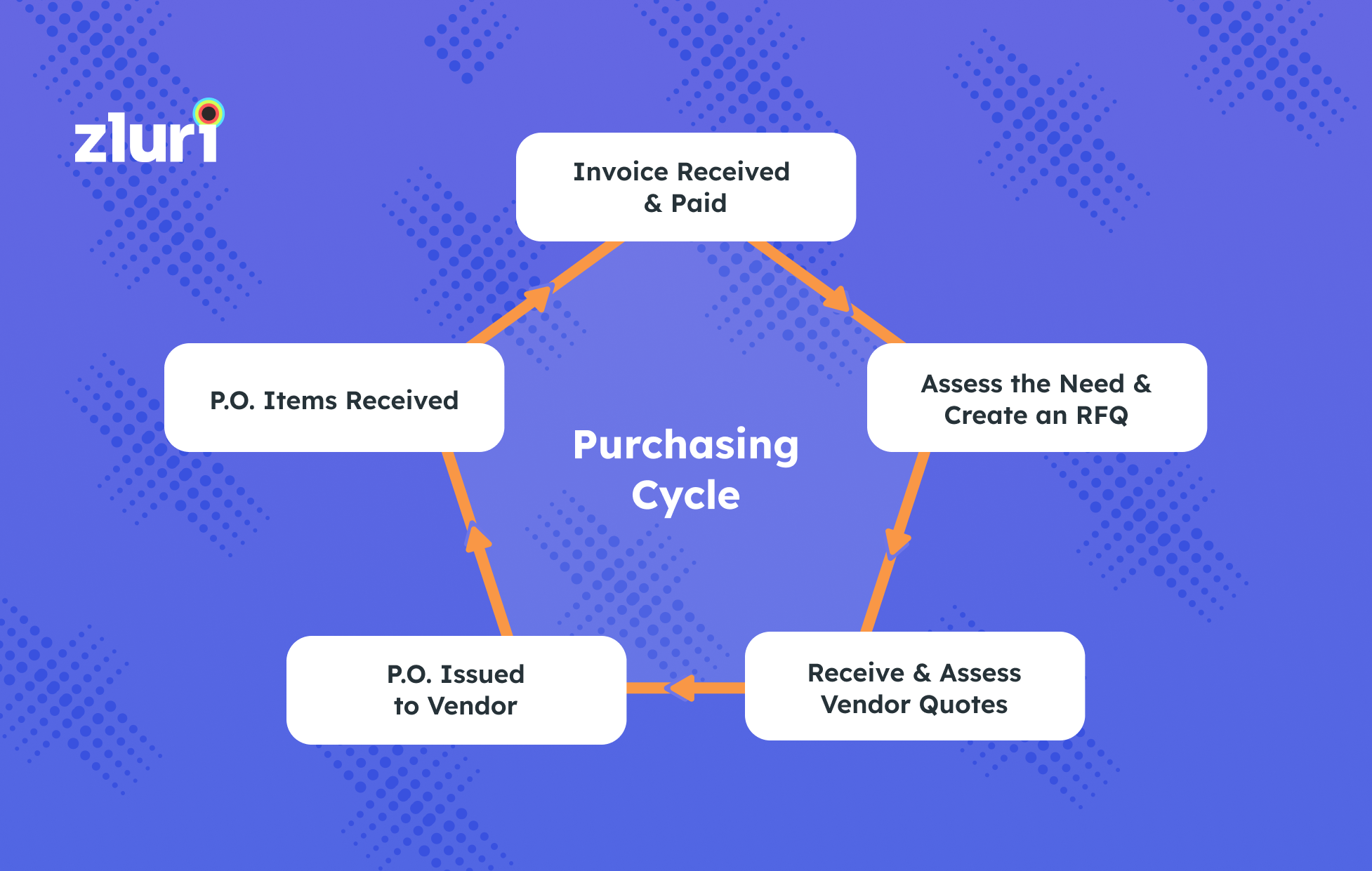
Get a request from the stakeholders (Referencing the supplier for any software requirement)
Vet the request for established requirements
Then create the purchase document for your desired solution.
Get the SaaS app delivered
Start using the software
Evaluate the app according to its performance for your needs.
Now pay the supplier according to your contract.
What is procurement?
Though purchasing is a simple process, procurement is a complex multilevel process.
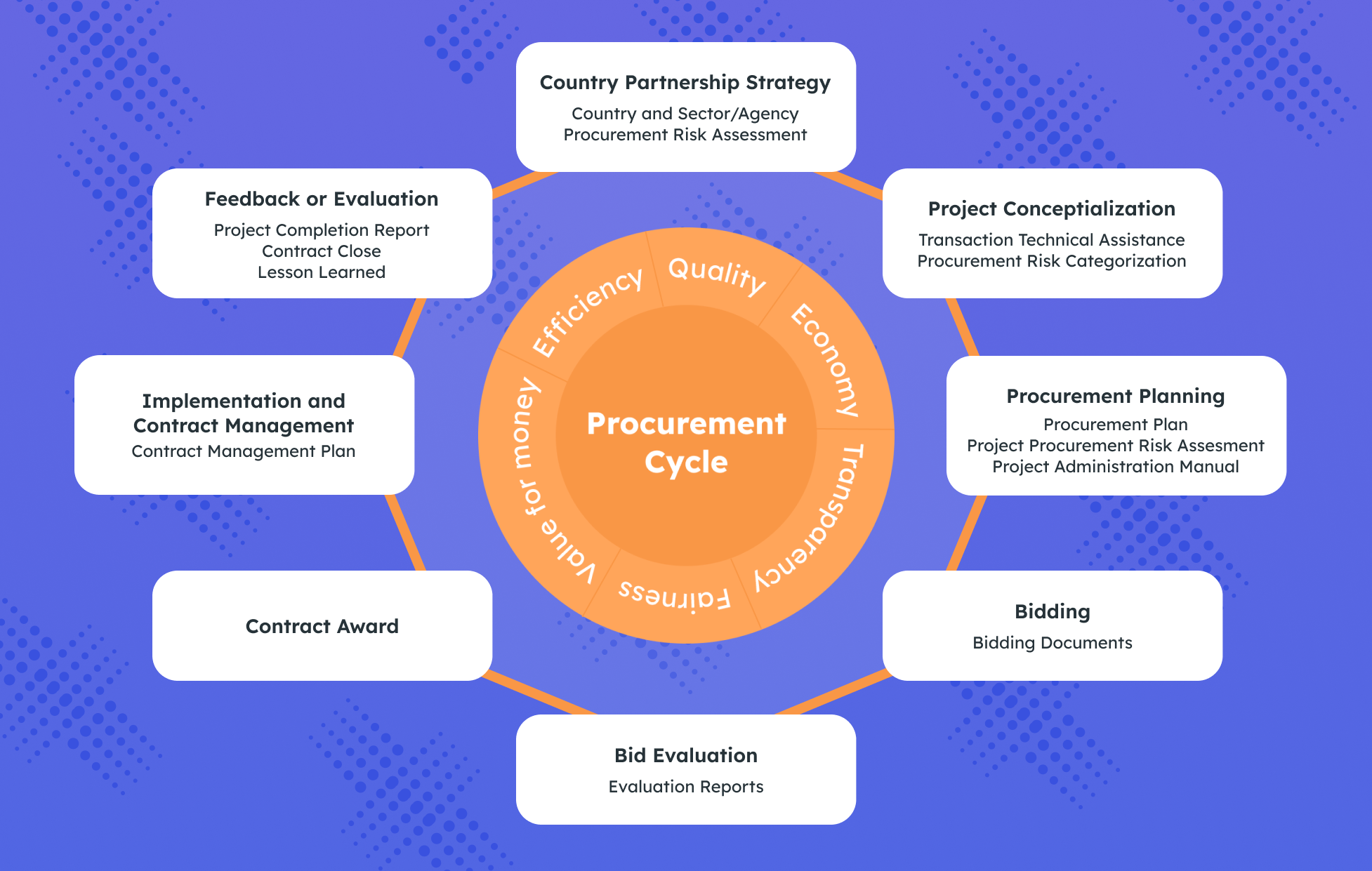
In simple terms, procurement is associated with big-sized companies, complexities, and specific customized needs to grow the business.
Suppose a company with 10000 employees needs 1000s of applications. It will get difficult for companies to buy the required SaaS app licenses without negotiation and customization. Also, it will increase their SaaS spending. One license may require a basic plan, whereas the other may require an advanced one. This is due to the various requirements of different departments and can only be analyzed during procurement.
Procurement is a multilevel process where more than one department is involved. It is time-consuming, and many business factors are adequately checked before making decisions.
For instance, the marketing team has given their requirement for a SaaS app, and the IT and procurement team gets involved for the approval. Also, the finance team gets involved for the budget purpose. This involves multiple departments in procuring the app.
These are the common parts of the procurement phase:
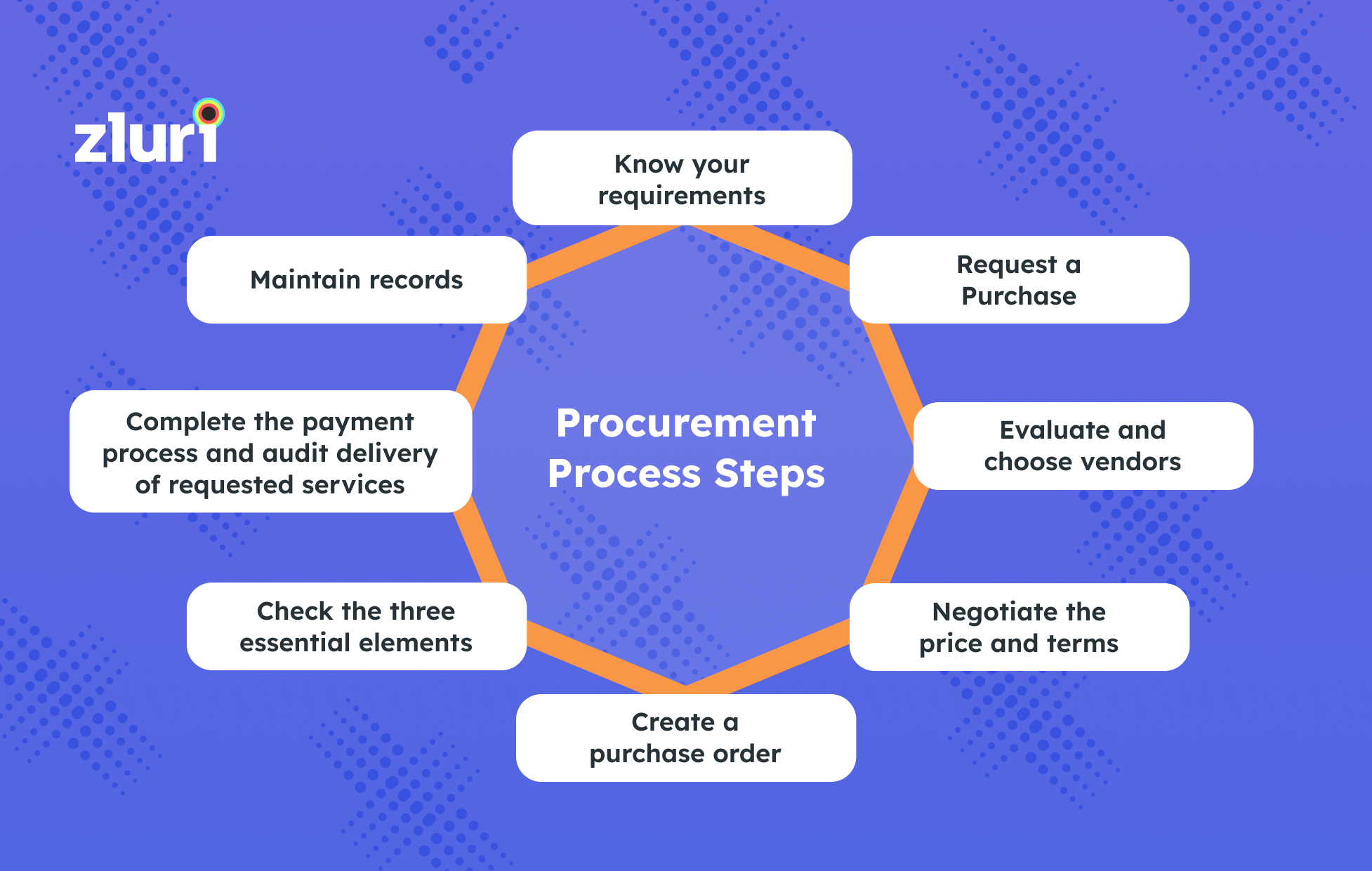
Identifying the needs: Procurement is a financial strategy for corporates. It helps you to plan, forecast, and budget your buying. They have valuable insights into how they fit into your large-scaling of business.
You need to know the purpose of buying SaaS apps. First, you need to categorize your needs from the service, as multiple suppliers are available with the same function.
If you identify correctly, then you can choose the best SaaS. It will help you with the right SaaS at the right price, and you will get discounts if you buy in bulk.
Evaluating services: After identifying your need, you must assess the suppliers' services. You have to choose one supplier before considering all the available options. You can ask for RFQ and RFP to understand the supplier's business in more detail and how they can benefit your business.
Negotiation: It is the process of reconsidering the prices of your requirements according to the discussions. The procurement team helps you to negotiate your best services using its strategy.
It becomes an integral part of procurement for complex contracts where experts deal with security and maintaining legal terms. After the agreement, the procurement team evaluates and conducts a KPI analysis to check for the solution's capability.
Supplier relationship: In businesses, customer-supplier relations play a vital role in long-term associations. After the contract is done, the relations management is started.
In small purchases, it's a one-and-done, but for procurement taking feedback and maintaining updates about new requirements strengthen the bond. Better relationships bring better outcomes for the business.
For example, in multi-year contracts, the requirements change according to expansion and scaling, where managing track of usage and maintaining rapport with customers helps you to grow in the business.
Payment and Renewal: Procurement teams take control of everything after the deal is confirmed, such as payment according to the contract terms, counseling, and maintaining window prices. It is a time-consuming and sensitive task for an organization.
Depending on the size of the SaaS stack and company size, procurement teams bring a vendor management system. It helps in contract management and renewal management of Saas apps.
Procurement management aims to reduce SaaS spending and utilize resources. It saves your time and money for your organization. It is a superset of purchasing.
The Difference Between Procurement and Purchasing
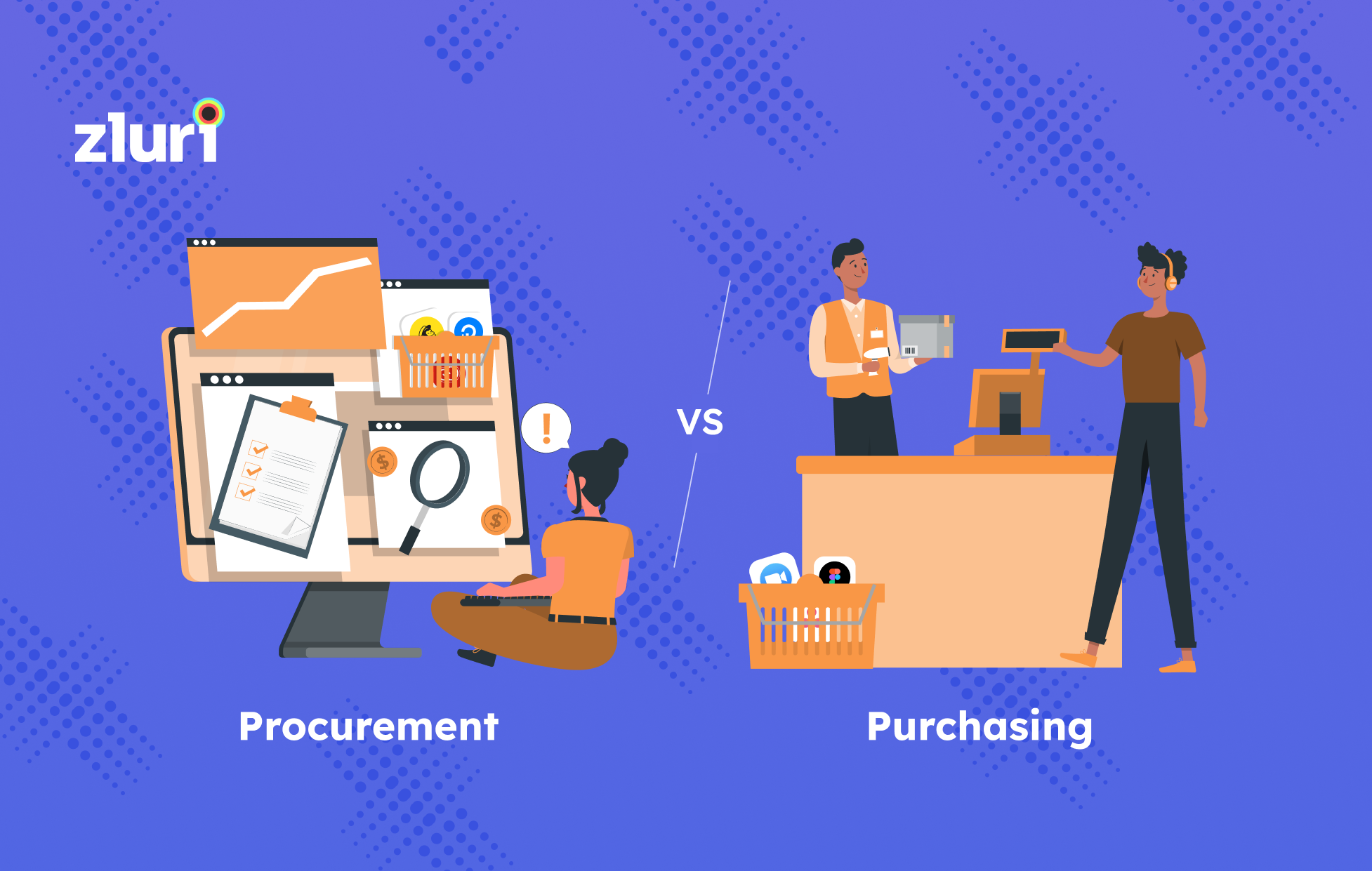
Are you confused about procurement and purchasing? Don’t worry, this article will help you clear your confusion.
There is a slight difference between purchasing and procurement. In purchasing, you don't need to focus on specifications, evaluations, estimations, and quality. However, in procurement, you must do thorough cost evaluation & estimations, market & grading, substitution & alternative evaluations, and more. It also involves strategic decisions.
You can buy SaaS apps either through procurement or purchasing. In your organization, you need specific apps for employees and buy it from vendors. Purchasing is comfortable for small orders, but you procure when you need it for large-size organizations and also for customized orders.
Procurement is the strategic process where you can use your negotiation skills and close a suitable deal for you. Both are related to buying but differ according to the organization's need, size, complexity, and process to grow their business.
Many companies use these two terms interchangeably, which creates confusion. It can increase the complexity of buying apps for organizations. Moreover, some companies have the same team for purchasing and procurement, which adds upto complexities. It creates confusion within the organization if it fails to communicate before closing any SaaS buying deal.
If followed, a few responsibilities for both- purchasing and procurement-can ease your SaaS buying.
This includes:
Purchase requisitions: For purchasing, you can have purchase requisitions (requesting to buy software within the organization) before buying any SaaS app from a supplier. Whereas for procurement, you don't need to have a purchase requisition. It's a long process where the supplier and the organization communicate with each other over many business factors before closing a contract.
Contract negotiation: Contract negotiation is using your strategies to negotiate the prices for any software. This can benefit your organization to use resources efficiently. It deals with proper strategies, analysis, and communication skills with the customer and the suppliers. In the procurement process, negotiation plays a significant role. Companies have procurement teams with professional negotiators to crack the best deals. On the contrary, for purchasing, contract negotiation is not required.
Contract management: For purchasing, you don't have to do much about contracts. It doesn't require managing the contracts. But, for procurement, managing contracts is very important. It would help if you had accurate data, reports, and analytics to renew the services and licenses. Thus you can maintain an excellent customer-supplier relationship that benefits your long-term business.
Payment Terms: For both procedures, specific payment terms are applicable. It can be once or multiple transactions over a financial year for your organization.
Supplier Relationship Management: For any business to grow, it is crucial to maintain the supplier relationship. For purchasing and procurement, you need to maintain a healthy relationship over time to benefit each other. You can get discounts, extra services, and other benefits if you have a proper connection with your supplier.
Long-term strategy, forecasting, and budgeting: For procurement, you need a proper plan according to your organization's needs. You have to make long-term strategies and forecasts that will benefit your organization. Also, requires budgeting to maintain the proper resources and use the service efficiently. Companies have dedicated procurement teams to deal with such scenarios and make the best deals. But, for purchasing, these are not mandatory.
RFQ: You get RFQ (Request for quotation) for purchasing and procurement. You can proceed with your deal if the potential supplier meets your organizational requirements. You use these factors when you know exactly what product you need and ask for the specific product's price.
RFP: For both, you can get RFP(Request for proposal) post RFI (request for information). RFP is an organizational proposal for bidding on the software and gathering vendor information before dealing with them.
How Zluri Eases SaaS Procurement and Management
Zluri provides SaaS buying and other procurement-related services. We have an expert procurement team to help you efficiently analyze your requirements and make strategic decisions. This helps you with 2X savings. We help you buy SaaS efficiently, saving time and money for your organization.
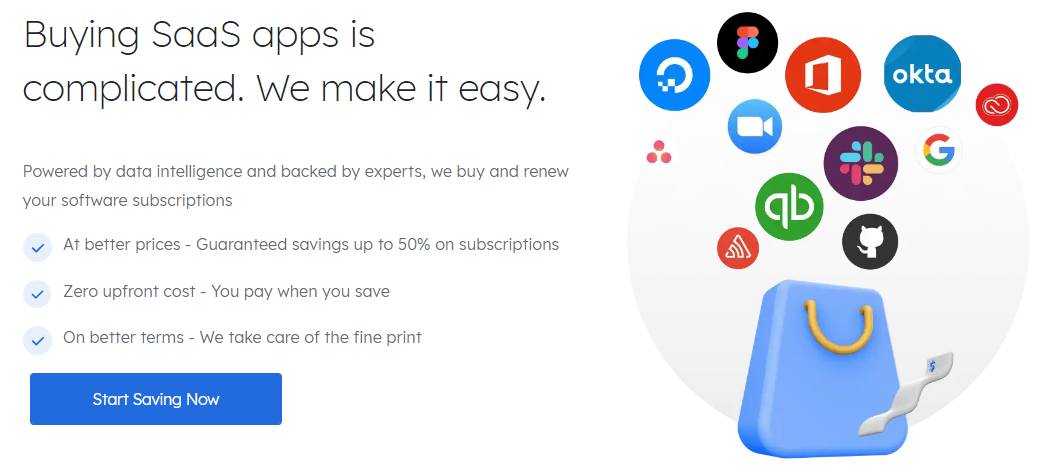
You don't have to pay any upfront fees. You pay only when we save. Suppose we promise to save $40000, you pay $20000 to us. If we save more than that, you still pay the same.

Zluri negotiates on your behalf and saves your team's time on negotiation. We get you the SaaS app you need. Our SaaS buying experts developed a standard SaaS procurement process. This involves procurement, finance, and individual requestors. It ensures transparency throughout the SaaS buying process.

Zluri offers a SaaS management platform that helps monitor SaaS usage and gains visibility over SaaS subscriptions. The app insights support removing unused, abandoned, and duplicate apps used without the IT team's knowledge.
The platform helps organizations reduce SaaS spending and eliminate SaaS wastage. This can efficiently be used to strengthen the SaaS buying and upgrade the SaaS stack.
Manage Vendors and Contracts: Zluri manages the relationship with vendors and your contracts. You can get a single dashboard to monitor your SaaS vendors. Zluri saves your time by keeping all the SaaS contracts in a single place.
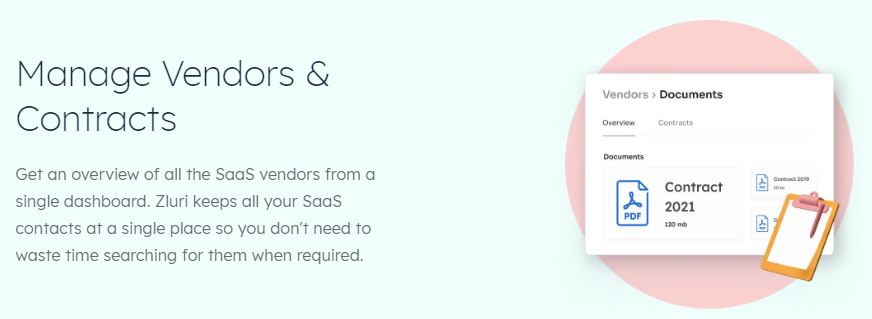
Renewal Calendar: Zluri gives an insightful overview of all upcoming SaaS renewals. It keeps track of your renewals that notifies you before auto-renewals, so if you want to stop any service, you can do that in time. It automates your overall SaaS experience.
Related Blogs
See More
Subscribe to our Newsletter
Get updates in your inbox
